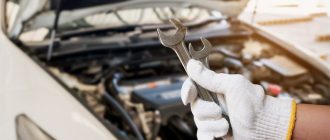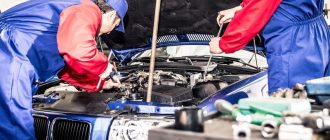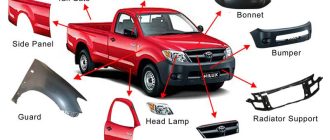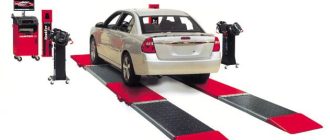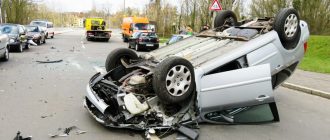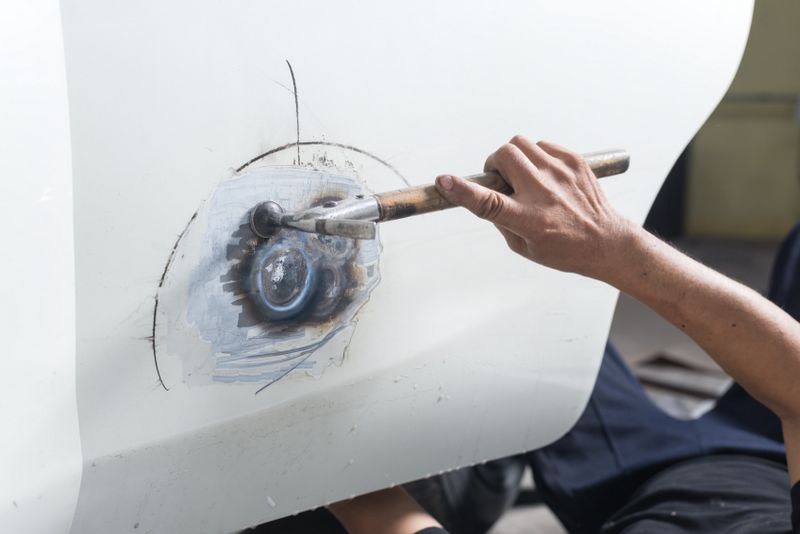
Different Methods and Techniques for Car Body Repair: A Comprehensive Guide to Technologies and Recommendations
Having a car accident is always stressful, and dealing with the aftermath can be a daunting task. One of the most crucial aspects of car accident recovery is getting your vehicle repaired. Car body repair is necessary to bring your vehicle back to its pre-accident condition and ensure its structural integrity and safety on the road.
There are various types of car body repair, depending on the extent of damage and the specific parts affected. Common types of car body repairs include dent removal, scratch repair, bumper repair, and panel replacement. Each repair type requires specific tools and techniques to achieve the best results.
Modern car body repair technologies have significantly advanced over the years, allowing for more precise and efficient repairs. Traditional methods such as hammering and sanding have been replaced with more sophisticated techniques like paintless dent repair (PDR) and computerized color matching. These technologies not only save time and money but also provide superior results, making your car look as good as new.
When it comes to choosing a car body repair shop, it is essential to do your research and select a reputable and experienced one. Look for shops that specialize in your car make and model, as they will have the expertise and knowledge to handle any specific issues. Additionally, consider reading customer reviews and asking for recommendations from friends or family who have had positive experiences with car body repair shops.
Overall, car body repair is a crucial process to restore your vehicle’s appearance and functionality after an accident. By understanding the different repair types, staying updated on the latest repair technologies, and choosing the right repair shop, you can ensure that your car is in good hands and will be restored to its pre-accident condition.
Why is car body repair needed?
Car body repair is necessary to maintain the appearance and functionality of a vehicle. There are several reasons why car body repair may be needed:
1. Accident damage: In the event of a collision or accident, the car’s body may sustain damage such as dents, scratches, or broken parts. Car body repair is essential to restore the vehicle to its pre-accident condition and ensure its safety on the road.
2. Wear and tear: Over time, a car’s body may develop wear and tear due to factors such as exposure to the elements, regular use, and aging. This can lead to rust, paint fading, or corrosion. Car body repair helps to address these issues, preventing further damage and maintaining the car’s value.
3. Improving aesthetics: Car body repair can also be done for cosmetic purposes, such as fixing minor imperfections or upgrading the appearance of the vehicle. This can include repainting, removing dents, or replacing damaged body parts, enhancing the overall look of the car.
4. Maintaining resale value: A well-maintained and repaired car body can significantly impact its resale value. Potential buyers are more likely to be interested in a vehicle that has been properly taken care of and has a clean, undamaged body. Car body repair helps to preserve the value of the car and increase its marketability.
5. Safety concerns: Damaged body parts can compromise the structural integrity of a vehicle, putting the driver and passengers at risk. Car body repair ensures that all safety features, such as airbags and seatbelts, function properly and that the car is structurally sound, providing optimal protection in the event of an accident.
Overall, car body repair is essential for maintaining the appearance, functionality, and safety of a vehicle. Whether it’s repairing accident damage, addressing wear and tear, or enhancing aesthetics, car body repair plays a crucial role in keeping the car in optimal condition.
Impact on appearance
The type of car body repair method used can have a significant impact on the appearance of the vehicle. Depending on the severity of the damage, different repair techniques may be required. For minor scratches and dents, paintless dent repair (PDR) is often used. This technique involves massaging the damaged area from the inside out, without the need for repainting. PDR can help restore the original appearance of the vehicle without leaving any visible signs of repair.
For more extensive damage, such as deep scratches or dents that cannot be repaired with PDR, traditional body repair techniques may be necessary. This typically involves sanding the damaged area, applying filler, and then repainting the affected area. While these methods can effectively restore the appearance of the vehicle, there may be slight variations in color or texture compared to the surrounding areas.
In some cases, the use of advanced technologies such as computerized color matching systems can help achieve a seamless repair. These systems analyze the original paint color and create a custom mix to match it precisely. This ensures that the repaired area blends in seamlessly with the rest of the vehicle, minimizing any noticeable differences in appearance.
It’s important to note that the skill and expertise of the technician performing the car body repair also play a significant role in the final appearance. A skilled technician will have the knowledge and experience to ensure that the repair is done to the highest standards, resulting in a flawless finish.
Overall, choosing the right car body repair method and relying on skilled professionals can help minimize the impact on the appearance of the vehicle, ensuring a high-quality repair that restores its original beauty.
Impact on driving performance
When a car body is damaged, it can have a significant impact on the overall driving performance. The severity of the impact depends on the type and extent of the damage.
One of the main factors that can affect the driving performance is the aerodynamics of the car. If the damage affects the shape of the car body, it can disrupt the airflow around the vehicle. This can result in increased drag, which can reduce the car’s top speed and fuel efficiency.
In addition to aerodynamics, the weight distribution of the car can also be affected by body damage. If one side of the car is heavier due to the damage, it can result in an imbalance that can affect the car’s handling and stability. This can make the car more difficult to control, especially at higher speeds or during maneuvers such as cornering or braking.
Furthermore, body damage can also impact the structural integrity of the car. Cracks or dents in the body panels can weaken the overall structure, making the car more susceptible to further damage in the event of a collision. This can compromise the safety of the vehicle and its occupants.
It is important to address any body damage promptly to minimize the impact on driving performance. Regular inspections and maintenance can help identify and repair any issues before they become more serious. Additionally, following recommended repair techniques and using high-quality materials can ensure that the car is restored to its original condition, minimizing any negative effects on driving performance.
Impact on safety
When it comes to car body repairs, ensuring the safety of the vehicle and its occupants is of utmost importance. The impact of car body repairs on safety cannot be understated.
Accidents can cause significant damage to a car’s body, compromising its structural integrity. This can lead to a decrease in safety during subsequent accidents and collisions. Therefore, it is crucial to ensure that car body repairs are done correctly to restore the vehicle’s safety features.
Modern car body repair technologies have made it easier to restore a car’s structural integrity. Advanced welding techniques, for example, allow for precise repairs that ensure the strength and durability of the repaired body parts.
In addition to structural repairs, car body repairs also involve restoring safety features such as airbags, seat belts, and sensors. These safety features play a critical role in protecting occupants during accidents, and it is essential to ensure their proper functioning after repairs.
Properly repaired car bodies also contribute to overall road safety. A car with a damaged body may have impaired visibility or compromised handling, increasing the risk of accidents. By repairing the body, these issues can be addressed, making the vehicle safer for both the driver and other road users.
It is important to note that car body repairs should be carried out by trained professionals who are knowledgeable about the specific make and model of the vehicle. This ensures that the repairs are done according to the manufacturer’s specifications and safety standards.
Regular maintenance and inspections of the car body are also essential for identifying any potential safety issues. By addressing these issues promptly, the overall safety of the vehicle can be maintained.
In conclusion, car body repairs have a significant impact on safety. Properly repaired car bodies restore the structural integrity of the vehicle, ensure the proper functioning of safety features, and contribute to overall road safety. It is crucial to prioritize safety when it comes to car body repairs and to rely on trained professionals to carry out the necessary repairs.
What are the types of car body damage?
Car body damage can occur in various forms, ranging from minor scratches to major dents. Understanding the different types of car body damage can help you determine the best repair method and estimate the cost involved. Here are some common types of car body damage:
| Type of Damage | Description |
|---|---|
| Scratches | These are superficial marks on the car’s surface caused by contact with another object. Scratches can vary in depth and severity, from light surface scratches to deep ones that penetrate the paint layer. |
| Dents | Dents occur when the car’s body is impacted by an object, causing a depression or crease in the metal. Dents can range from small dings to large, noticeable deformations. |
| Cracks | Cracks typically occur on the car’s windshield or windows due to impact or stress. They can vary in length and severity, and if left unaddressed, can compromise the structural integrity of the car. |
| Paint Chips | Paint chips are small areas where the paint has been chipped off, exposing the underlying metal. They are often caused by flying debris or rocks kicked up by other vehicles. |
| Rust | Rust is a common form of car body damage that occurs when the metal is exposed to moisture and oxygen over time. It can eat away at the metal, causing holes and weakening the structure of the car. |
| Accidental Damage | Accidental damage can occur in various ways, such as collisions, side-swipes, or being hit by another vehicle. This type of damage can range from minor scratches to severe structural damage. |
It’s important to address car body damage promptly to prevent further deterioration and maintain the value and appearance of your vehicle. Consulting a professional auto body repair shop can help you determine the best course of action and ensure a proper repair.
Dents
One of the most common types of car body damage is dents. Dents can occur due to various reasons, such as collisions, hailstorms, or parking accidents. They can range from small dings to larger depressions in the body of the car.
There are several techniques used to repair dents, depending on the severity and location of the damage. One common method is paintless dent repair (PDR), which involves using special tools to carefully massage the dent from the inside out. This technique is typically used for smaller dents and does not require repainting the affected area.
For larger dents or those in hard-to-reach areas, traditional dent repair methods may be necessary. This involves using body filler to fill in the dent and then sanding it down to create a smooth surface. Afterward, the area is repainted to match the rest of the car’s body.
It is important to address dents promptly, as they can not only affect the appearance of the car but also decrease its resale value. Additionally, if left untreated, dents can lead to further damage, such as paint cracking or rusting.
To prevent dents, it is advisable to park in designated areas, away from high traffic or areas where objects are likely to fall. Using protective covers or parking sensors can also help minimize the risk of dents.
In conclusion, dents are a common form of car body damage that can be repaired using various techniques. It is important to address dents promptly to maintain the car’s appearance and value.
Cracks
Cracks in a car body can occur due to various reasons, such as accidents, aging, or structural issues. They can range from small hairline cracks to larger, more severe cracks that can compromise the integrity of the vehicle.
When it comes to repairing cracks in a car body, there are several techniques and technologies available:
1. Welding: This is one of the most common methods used to repair cracks in car bodies. It involves fusing the cracked parts together using heat and a filler material. Welding can be used for both steel and aluminum car bodies.
2. Bonding: Bonding is another method used to repair cracks, especially for plastic car bodies. It involves using adhesive materials to bond the cracked parts together. This technique is effective for smaller cracks and can provide a seamless repair.
3. Patching: Patching involves covering the crack with a patch or a piece of material that matches the car body. This method is often used for smaller cracks and can be a temporary solution until a more permanent repair can be done.
4. Reinforcement: For larger and more severe cracks, reinforcement techniques may be needed. This can involve adding additional support structures or reinforcing the affected area to prevent further cracking or damage.
5. Prevention: While it is important to know how to repair cracks in a car body, it is equally important to prevent them from occurring in the first place. Regular maintenance, avoiding accidents, and addressing any structural issues promptly can help prevent cracks from forming.
In conclusion, cracks in a car body can be repaired using various techniques and technologies, depending on the severity and type of the crack. It is important to choose the appropriate method and consult a professional if needed to ensure a safe and effective repair.
Punctures
One common type of car body repair is fixing punctures. Punctures occur when a sharp object pierces the car’s body, causing a hole or tear. This can happen from things like nails, screws, or other debris on the road.
When a puncture occurs, it is important to address it as soon as possible to prevent further damage to the car’s body. Ignoring a puncture can lead to rusting and corrosion, which can weaken the structural integrity of the vehicle.
To repair a puncture, the damaged area is first cleaned and prepared. Any loose debris or rust is removed to ensure a clean surface for repair. The hole or tear is then filled with a body filler material, which is shaped and sanded to match the surrounding area. Once the filler is dry, it is painted to blend with the rest of the car’s body.
It is important to note that the size and location of the puncture will determine the type of repair needed. Small punctures can often be fixed with a simple patch or plug, while larger or more severe punctures may require more extensive repair work.
To prevent punctures in the future, it is recommended to drive cautiously and avoid debris on the road whenever possible. Regularly inspecting the tires and keeping them properly inflated can also help reduce the risk of punctures.
In conclusion, punctures are a common car body repair issue that should be addressed promptly to prevent further damage. By following the proper repair techniques and taking preventative measures, car owners can ensure their vehicles remain in good condition for years to come.
Deformations
Deformations in car bodies can occur due to various reasons, such as accidents, collisions, or even natural wear and tear. These deformations can range from minor dents and scratches to major structural damage. It is important to identify and repair these deformations to ensure the safety and aesthetics of the vehicle.
When it comes to repairing deformations in car bodies, there are several types of technologies and techniques that can be used:
| Technology/Technique | Description |
|---|---|
| Paintless Dent Repair (PDR) | This technique involves using specialized tools to gently push out small dents from the inside of the car body, without the need for repainting. It is typically used for minor dents that have not caused any paint damage. |
| Traditional Dent Repair | For larger dents or those that have caused paint damage, traditional dent repair techniques may be used. This involves using body fillers, sanding, and repainting to restore the damaged area to its original condition. |
| Frame Straightening | In cases where the car’s frame has been deformed, frame straightening techniques are used. This involves using hydraulic equipment to carefully bend the frame back into its original shape. |
| Panel Replacement | If a car body panel is severely damaged and cannot be repaired, it may need to be replaced. This involves removing the damaged panel and installing a new one, which is then painted to match the rest of the car. |
It is important to consult with a professional car body repair technician to assess the extent of the deformations and determine the most appropriate repair method. They will have the expertise and equipment to restore the car body to its original condition, ensuring both safety and aesthetics.
What car body repair methods exist?
When it comes to repairing car bodies, there are several methods that can be used depending on the extent of the damage. These methods include:
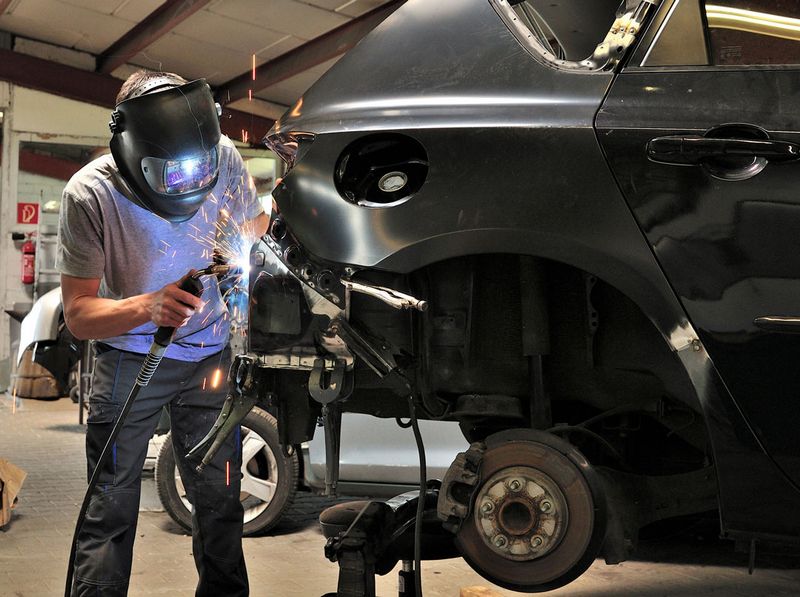
| Method | Description |
|---|---|
| Paintless Dent Repair (PDR) | This method is used to repair small dents and dings without the need for repainting. It involves using specialized tools to massage the metal back into its original shape. |
| Traditional Dent Repair | For larger dents, traditional dent repair may be necessary. This method involves using body filler, sanding, and repainting to restore the damaged area. |
| Panel Replacement | If a car body panel is severely damaged, it may need to be replaced. This involves removing the damaged panel and installing a new one. |
| Frame Straightening | If the car’s frame is bent or damaged, frame straightening may be required. This involves using hydraulic equipment to carefully bend the frame back into its original shape. |
| Painting and Refinishing | After the repairs are made, the damaged area will need to be repainted and refinished to match the rest of the car. This involves sanding, priming, painting, and clear coating. |
It is important to choose the right repair method based on the type and severity of the damage. Consulting with a professional car body repair technician can help determine the best approach for repairing your car.
Panel beating
Panel beating, also known as body repair, is a type of car body repair technique that involves reshaping damaged metal panels. This process is commonly used to repair dents, scratches, and other forms of damage caused by accidents or general wear and tear.
Panel beating typically involves the use of specialized tools such as hammers, dollies, and hydraulic presses to carefully shape the metal back into its original form. The damaged area is first assessed to determine the extent of the damage, and then the panel is carefully manipulated to remove any dents or imperfections.
During the panel beating process, it is important to ensure that the paintwork is not damaged or affected. Therefore, it is common practice to remove the damaged panel from the car before commencing the repairs. Once the panel has been reshaped, it is then reattached to the car and any necessary finishing touches are applied.
Panel beating requires a skilled technician who has a good understanding of metalworking techniques and the ability to manipulate the metal with precision. It is a time-consuming process that requires patience and attention to detail.
In some cases, if the damage is too severe or the panel cannot be repaired, it may need to be replaced entirely. This can involve sourcing a new panel and then fitting it to the car.
Overall, panel beating is an essential part of car body repair and plays a crucial role in restoring the appearance and structural integrity of a vehicle.
Part replacement
Part replacement is a common method used in car body repair to fix damage that cannot be repaired through other means. This technique involves replacing the damaged part of the car with a new one.
There are various reasons why part replacement may be necessary. For example, if a car’s body panel is severely dented or damaged beyond repair, it may need to be completely replaced. Additionally, if a car’s windshield is cracked or shattered, it will need to be replaced for safety reasons.
When it comes to part replacement, it is important to ensure that the replacement part is of high quality and is compatible with the make and model of the car. This is crucial for the overall structural integrity and appearance of the vehicle.
Part replacement can be a complex process that requires the expertise of skilled technicians. They will need to carefully remove the damaged part and install the new one, ensuring that it fits correctly and is securely attached. This may involve welding or using adhesives to ensure a strong bond.
It is recommended to consult with a professional auto body repair shop for part replacement. They will have the necessary tools and knowledge to properly assess the damage and determine if part replacement is the best solution. They can also source high-quality replacement parts and ensure that the repair is done to the highest standard.
In conclusion, part replacement is a common technique used in car body repair to fix damage that cannot be repaired through other means. It is important to consult with a professional auto body repair shop to ensure that the replacement part is of high quality and is installed correctly.
Refinishing
Refinishing is a car body repair process that involves restoring the paintwork of a vehicle. This is typically done to fix any imperfections, such as scratches, chips, or fading, that may have occurred over time. The goal of refinishing is to make the car look as good as new, improving its overall appearance and value.
There are several steps involved in the refinishing process. First, the damaged area is prepped by sanding down the old paint and removing any rust or other contaminants. Next, a primer is applied to ensure proper adhesion of the new paint. Then, several layers of paint are applied, allowing each layer to dry before applying the next. Finally, a clear coat is applied to protect the paint and give it a glossy finish.
Refinishing can be done using different types of paint, including water-based and solvent-based paints. Water-based paints are more environmentally friendly, but they may not provide the same level of durability as solvent-based paints. The choice of paint will depend on factors such as the desired finish, the type of damage being repaired, and any local regulations.
It is important to note that refinishing is a complex process that requires skill and experience. It is best to leave this type of repair to a professional auto body shop to ensure the best results. They will have the necessary tools, equipment, and expertise to properly match the color and finish of the existing paint, as well as to address any underlying structural issues that may affect the longevity of the repair.
Refinishing is a car body repair technique that focuses on restoring the paintwork of a vehicle. It involves several steps, including prepping the damaged area, applying primer and paint, and adding a clear coat for protection. It is important to seek professional assistance for refinishing to ensure a high-quality and long-lasting repair.
How often to inspect the car body?
Regular inspections of your car body are crucial to maintaining its appearance and preventing further damage. It is recommended to inspect the car body at least once a month, or more frequently if you notice any signs of damage.
During the inspection, pay attention to any scratches, dents, or rust spots on the car body. These issues can worsen over time if left untreated, leading to more extensive and costly repairs. Additionally, inspect the paintwork for any fading or chipping, as this can affect the overall look of the vehicle.
It is also important to inspect the car body after any accidents or collisions. Even minor incidents can cause hidden damage that may not be immediately visible. By inspecting the car body thoroughly, you can identify any underlying issues and address them promptly.
If you live in an area with harsh weather conditions, such as heavy rainfall or extreme temperatures, it is recommended to inspect the car body more frequently. These conditions can accelerate the wear and tear on your vehicle, making it more susceptible to damage.
Regular car washes can also help you keep an eye on the condition of your car body. Take the opportunity to inspect the body while cleaning, as this will allow you to identify any new damage or issues that need attention.
Inspecting your car body regularly is essential for maintaining its condition and preventing further damage. By being proactive and addressing any issues promptly, you can ensure that your car body remains in top shape for years to come.
Weekly checks
Performing regular weekly checks on your car’s body can help prevent any major issues and ensure that your vehicle remains in good condition. Here are some key areas to inspect:
1. Exterior
Inspect the exterior of your car for any visible damage, such as dents, scratches, or rust. It’s important to address these issues promptly to prevent further damage and maintain the value of your vehicle.
2. Lights
Check all the lights on your car, including headlights, taillights, brake lights, and turn signals. Replace any bulbs that are not working to ensure optimal visibility and safety on the road.
3. Tires
Check the tire pressure and tread depth on all four tires. Improperly inflated tires can affect your vehicle’s handling and fuel efficiency, while worn-out tires can compromise traction and safety. Rotate your tires regularly to ensure even wear.
4. Fluid levels
Check the levels of essential fluids in your car, such as engine oil, coolant, brake fluid, and windshield washer fluid. Topping up or replacing these fluids when necessary can help prevent engine damage, overheating, and other problems.
5. Wipers and windshield
Inspect the condition of your windshield wipers and replace them if they are worn or damaged. Also, check for any cracks or chips on your windshield and have them repaired to prevent further damage and ensure clear visibility.
Remember to consult your car’s manual for specific instructions and recommended maintenance schedules. Performing these weekly checks can help keep your car in top shape and minimize the need for costly repairs in the future.
Seasonal inspections
Regular seasonal inspections are an essential part of car body maintenance. These inspections help identify any potential damage or issues that may have occurred as a result of seasonal changes, such as extreme temperatures, road salt in winter, or exposure to sun and heat in summer.
During a seasonal inspection, a trained professional will thoroughly examine the car body for any signs of damage, including dents, scratches, rust, or paint chips. They will also check for any structural issues that may have developed over time.
By conducting seasonal inspections, car owners can address any minor damages before they become major problems. Prompt repairs can prevent further deterioration and costly repairs in the future.
Winter inspections:
Winter inspections are particularly important, as cold temperatures, ice, and road salt can cause significant damage to a car’s body. The inspection should focus on areas prone to corrosion, such as the undercarriage, wheel wells, and lower parts of the car body.
Summer inspections:
Summer inspections should primarily focus on the car’s exterior, including the paint, clear coat, and any exposed areas. The inspection should also include a check for any damage caused by heat, such as fading or peeling paint.
It is recommended to schedule seasonal inspections at least twice a year, ideally before winter and summer. However, the frequency may vary depending on the climate and driving conditions. Car owners should consult their vehicle’s manufacturer or a trusted mechanic for specific recommendations.
Remember, regular seasonal inspections can help maintain the appearance and integrity of your car’s body, ensuring its longevity and value.
Annual inspections
Annual inspections are an important part of car body maintenance. They help identify any potential issues or damage to the car body that may have occurred over the course of a year. By conducting annual inspections, car owners can ensure that their vehicles remain in good condition and address any problems before they worsen.
During an annual inspection, a qualified technician will thoroughly examine the car body for any signs of damage. This includes checking for dents, scratches, rust, and paint chips. They will also assess the overall condition of the car body, including the structural integrity and alignment.
One of the key benefits of annual inspections is that they can help prevent further damage and costly repairs. By detecting and addressing any issues early on, car owners can avoid more extensive damage in the future. This can also help preserve the value of the vehicle.
It is recommended to schedule an annual inspection with a reputable auto body repair shop or dealership. These professionals have the expertise and tools to conduct a thorough inspection and provide recommendations for any necessary repairs or maintenance.
In addition to annual inspections, car owners should also practice regular car body maintenance. This includes regularly washing and waxing the car, as well as promptly addressing any minor damage or issues that arise. By taking care of the car body on a regular basis, car owners can extend the life of their vehicles and maintain their appearance.
Annual inspections are an essential part of car body maintenance. They help identify any potential issues or damage, prevent further damage, and preserve the value of the vehicle. Car owners should schedule annual inspections with a qualified professional and practice regular car body maintenance to ensure the longevity and appearance of their vehicles.
How to choose a good car body repair shop?
When it comes to repairing your car’s body, it’s important to find a reputable and reliable repair shop. Here are some factors to consider when choosing a good car body repair shop:
- Experience and expertise: Look for a repair shop that has extensive experience in car body repairs. Check if they have skilled technicians who specialize in different types of repairs.
- Reputation: Research the shop’s reputation by reading reviews and asking for recommendations from friends or family. A good reputation indicates the shop’s commitment to quality work and customer satisfaction.
- Insurance coverage: If you’re planning to file an insurance claim for the repairs, make sure the repair shop works with your insurance company. This will ensure a smoother process and avoid any additional out-of-pocket expenses.
- Certifications and affiliations: Look for repair shops that have certifications from reputable organizations, such as ASE (Automotive Service Excellence). These certifications indicate that the shop meets industry standards and has the necessary qualifications.
- Warranty: Inquire about the warranty offered by the repair shop. A good shop should provide a warranty on their workmanship and the parts they use.
- Estimates and pricing: Get multiple estimates from different repair shops to compare prices. However, keep in mind that the cheapest option may not always be the best. Consider the quality of work and reputation of the shop when making your decision.
- Communication and customer service: Pay attention to how the repair shop communicates with you. They should be professional, responsive, and willing to answer any questions you may have. Good customer service is essential for a positive repair experience.
- Facilities and equipment: Visit the repair shop in person to assess their facilities and equipment. A well-equipped shop with modern tools and technology is likely to provide better quality repairs.
By considering these factors, you can make an informed decision and choose a good car body repair shop that will provide quality repairs and ensure your satisfaction.
Reputation check
Before choosing a car body repair shop, it is important to check their reputation. A reputable shop will have positive reviews and recommendations from previous customers.
One way to check the reputation of a car body repair shop is to look for online reviews. Websites such as Yelp, Google, and Facebook allow customers to leave reviews and ratings for businesses. Reading these reviews can give you an idea of the quality of work and customer service provided by the shop.
Another way to check the reputation of a car body repair shop is to ask for recommendations from friends, family, or coworkers. If someone you know has had a positive experience with a particular shop, it is likely that they will provide good service to you as well.
It is also a good idea to check if the car body repair shop is a member of any professional associations or organizations. These associations often have strict standards and codes of ethics that their members must adhere to. Being a member of such an organization can be a good indication of the shop’s commitment to professionalism and quality.
| Methods to Check Reputation: |
|---|
| 1. Online reviews |
| 2. Recommendations from friends, family, or coworkers |
| 3. Membership in professional associations or organizations |
By taking the time to check the reputation of a car body repair shop, you can ensure that you are choosing a reliable and trustworthy business to handle your car repairs.
Certificates
Car body repair is a complex process that requires technical expertise and knowledge. To ensure that the repair work is done correctly and meets the highest standards, it is important to choose a repair shop that has the necessary certifications.
There are several certificates that a car body repair shop can obtain to demonstrate their expertise and professionalism. These certificates are usually issued by industry organizations and associations. Some of the most recognized certificates in the car body repair industry include:
| Certificate | Description |
|---|---|
| ASE Certification | The National Institute for Automotive Service Excellence (ASE) offers certifications for various automotive repair specialties, including collision repair. ASE-certified technicians have demonstrated their knowledge and skills in car body repair. |
| I-CAR Gold Class Certification | I-CAR is an industry organization that provides training and certification programs for collision repair professionals. The Gold Class Certification is the highest level of certification offered by I-CAR and demonstrates that the repair shop has met rigorous training requirements. |
| OEM Certifications | Original Equipment Manufacturer (OEM) certifications are issued by car manufacturers to repair shops that meet their standards for quality and expertise. These certifications ensure that the repair shop has the necessary tools, equipment, and training to properly repair vehicles from specific manufacturers. |
When choosing a car body repair shop, it is important to ask about their certifications and verify their validity. The presence of these certifications indicates that the repair shop has invested in training and has the necessary expertise to provide high-quality repair services.
It is also worth noting that certifications are not the only factor to consider when choosing a repair shop. Other factors, such as customer reviews, warranty policies, and the shop’s experience with your specific make and model of car, should also be taken into account.
By choosing a repair shop with the right certifications, you can have confidence that your car will be repaired correctly and safely.
Customer reviews analysis
Customer reviews play a crucial role in helping car owners make informed decisions about car body repair services. Analyzing customer reviews can provide valuable insights into the quality of the repair work, customer satisfaction, and the overall reputation of the repair shop.
When analyzing customer reviews, it is important to look for common themes or patterns. Positive reviews often highlight factors such as excellent customer service, timely repairs, and high-quality work. On the other hand, negative reviews may indicate issues with communication, delays in repairs, or unsatisfactory results.
It is also helpful to pay attention to the overall sentiment of the reviews. Positive reviews with enthusiastic language and high ratings can indicate a trustworthy and reliable repair shop. Conversely, negative reviews with strong language and low ratings may be a red flag for potential customers.
Another aspect to consider when analyzing customer reviews is the frequency and consistency of the feedback. A repair shop with a large number of positive reviews over a period of time is likely to be more reliable than one with only a few reviews or inconsistent ratings.
It is recommended to read a range of reviews, both positive and negative, to get a comprehensive understanding of the repair shop’s reputation. This can help car owners make an informed decision and choose a repair shop that best meets their needs and expectations.
In conclusion, analyzing customer reviews is an essential step in the car body repair process. By considering common themes, overall sentiment, and frequency of feedback, car owners can gain valuable insights into the quality of repair services and make informed decisions.
Question-answer:
What are the most common types of car body repairs?
The most common types of car body repairs include fixing dents, scratches, and paint chips, as well as replacing or repairing damaged panels.
What are the different technologies used in car body repairs?
Car body repairs can be done using various technologies such as traditional methods like hammer and dolly, as well as more advanced techniques like paintless dent repair and panel replacement using adhesive bonding.
How can I choose the right car body repair shop?
When choosing a car body repair shop, it’s important to consider factors such as their reputation, experience, certifications, and customer reviews. You should also inquire about the warranty they offer for their work and compare prices to ensure you’re getting a fair deal.
What are some recommendations for preventing car body damage?
To prevent car body damage, it’s recommended to park your car in a covered or shaded area to protect it from the elements. You should also avoid parking too close to other vehicles to minimize the risk of dents and scratches. Additionally, regular washing and waxing can help protect the paint job from fading and chipping.
Can I repair car body damage myself?
While minor car body repairs such as small dents or scratches can be done at home with the right tools and knowledge, more extensive damage should be left to professionals. Attempting to repair major damage yourself can result in further damage and may void any existing warranties or insurance claims.
What are the different types of car body repair?
There are several different types of car body repair, including dent repair, scratch repair, paintless dent repair, and collision repair.
